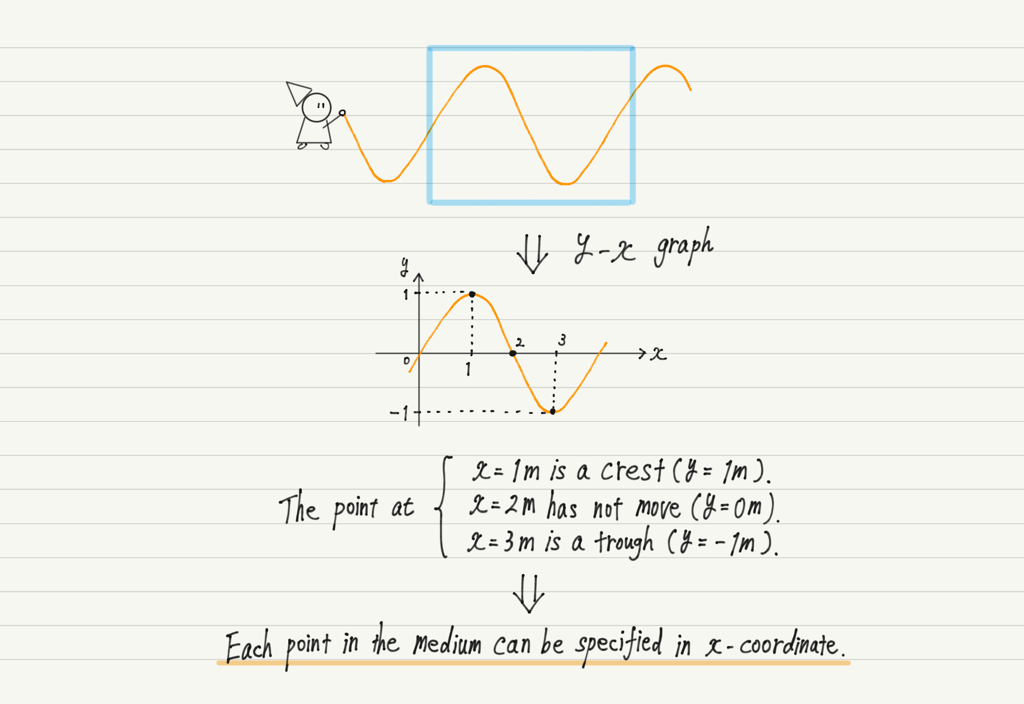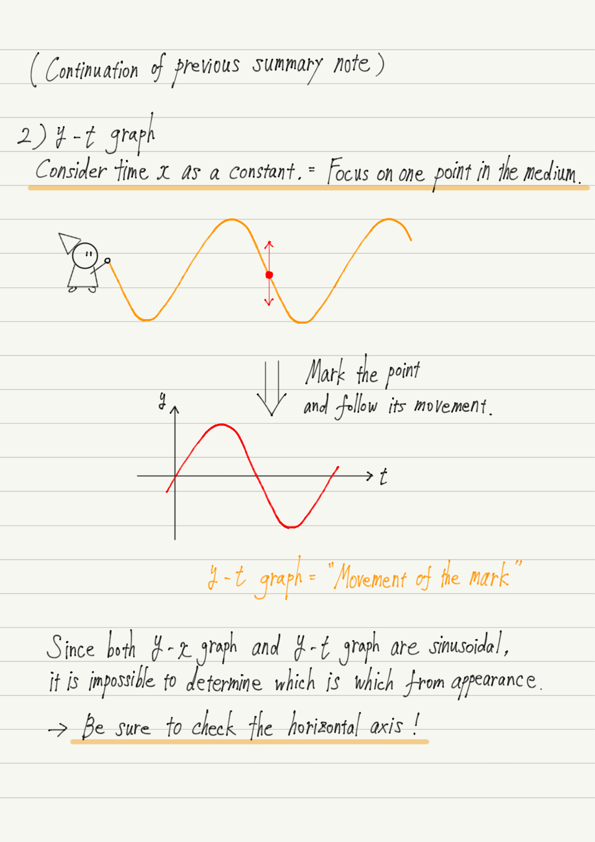y-t Graph of Wave
First, a review of the previous lecture.
To graph a wave, let’s assume that one of the two variables (t and x) is a constant!
This was the content of the lecture.
And now that we have actually drawn a graph showing the relationship between y and x with time t as a constant, what would happen to the graph if we considered x instead of t to be a constant?
Meaning of y-t graph
For moving waves, “taking time t as a constant” can be thought of as “taking a picture of the wave”.
So what exactly does it mean to regard x as a constant?
As an example, consider a wave created by swinging a rope, where the value of x represents each point on the rope.
In other words, “regard x as a constant” means “follow only the movement of a single point in the rope”.
If you are asked to draw a y-t graph at x = 5 m, you can mark the x = 5 m point on the rope and follow the movement of that mark.
The y-t graph shows the movement of a mark on a medium with time.
(Note that the y-t graph represents the motion of the medium, not the waveform!)
Note on wave graphs
Now that we have the two types of wave graphs, look closely at the shape of each graph.
Both the y-x and y-t graphs have a sinusoidal shape, and it is impossible to distinguish which graph is which just by looking at the shape!
Whenever you see a graph of waves, be sure to check what the horizontal axis represents!
Summary of this lecture
Next Time
Now that we have the two graphs, let’s pay attention to their differences and try to read them!



